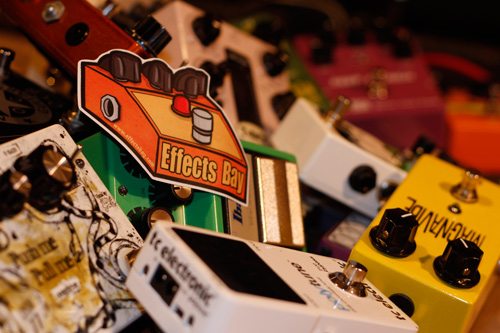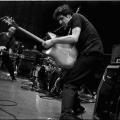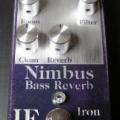The following is a guest post by Tajj Black. If you are interested in guest posting, please contact me!
A never-ending debate usually occurs when guitar players discuss using multi-effect pedals versus separate stomp box units. If we want to compare, first we have to understand where guitar effects are coming from and why are there so much variations of the guitar’s sound with respect to other instruments.
Early Era of single effects
During the 50s and 60s, guitar effects and techniques were revolutionized especially during the Blues-Rock transition era which was roughly between 1964 and 1970. Bands such as Cream, The Jimi Hendrix Experience, The Beatles, The Doors, Pink Floyd and The Rolling Stones started to toy with guitar effects and experimented with wild and extended solos resulting in Psychedelic Rock. This created a high demand of ‘out-of-this world’ guitar effects that did extreme things to the input signal coming from the guitar. It is argued that Ike Turner, the late blues musician, inspired the distortion and fuzz effect, due to his recording of “Rocket 88”. The story is that a guitar amp fell out of the back of the truck he was travelling in on the way to the studio and he decided to repair it with duct-tape in the interest of time. During the critical time in music, rockers had to deal with multiple stomp boxes and a lot of analog equipment. I mean an original Analog Delay used in the early 50s had to be recorded within an echo space which was completely constructed.
New Era Stomp Boxes and effect units
The new era of stomp boxes started to employ technology thanks to the development of computers in the late 1900s. As time passed on, the effects began to become more refined and extremely versatile in the form of small and light stomp boxes. Companies such as Boss, Dunlop, Ibanez and Vox began to refine and develop their specialties, and guitar players got a brand depending on the tone they preferred. Some great examples of effect units are Jim Dunlop’s Cry Baby Wah effect, Ibanez’s Flying Pan, The EBow, The Roger Mayer Octavia or Boss’s Loop Station.
The Birth of Multi-Effect Pedals
The Multi-effects pedal came with the demand for a lot of effects at a lower price in a single package. A pedal can have over 100 effects with multiple settings and be smaller than a musical keyboard due to the digital age. Boss makes a pretty impressive Multi-Effects pedal called the ME-50. Its signature metallic blue makes it seem very flamboyant compared to other pedals and it boasts a very ergonomic, robust and user-friendly design especially during live performances. A key factor to multi-effect pedals when choosing is; “Is this pedal easy to use, especially on the fly?” We need to always remember that music is recording in time and tempo. A pedal can have a world of effects but if you can’t get to really take advantage of them due to the complexity of the unit, then it might not be feasible.
So how does this compare to the Digital Age where multiple effects can be put into a single unit smaller than a briefcase? Well let us at where each unit wins.
Where Multi-Effect Pedals Win
Cost-effective: These pedals are the equivalent of getting a wholesale deal at a store. The price of some of the best Multi-Effect Pedals on the market are less than $800 US dollars and they can contain over 100 different effects, plus provide separate alterations to each of the effects.
Energy Saving: For the multiple effects provided, it only requires one power source or plug.
Versatility: There are so many effects and sounds in these pedals that you can make your guitar sound Chicago Blues or Heavy-Metal just by tweaking a minor amount of settings. The possibilities are relatively endless!
Portability: A Multi-Effect Pedal is a small unit and it requires nothing more than a power adapter, and (2) ¼ double-end male cables to input and output the sound between your guitar and the desired output. This is extremely important for a musician that will spend most of their time traveling.
Saved Settings: Multi-Effect pedals have great organization, and the interface is able to save a number of settings for different songs or styles of music.
Where Stomp-Boxes Win
Great sound quality: It gives you the ability to hone your sound by matching different stomp Boxes. This is where the professional sound comes from that most guitarists crave. Imagine having your personally favorite stomp boxes on one rack. It’s the musicians dream.
Great for Live performances: It allows spontaneity due to multiple option setup compared to one single unit that has to be changed to get to most settings.
Lesser chance of a complete unit failure: Due to the independence of stomp boxes, if one unit fails then you can simply plug-out the one that is not working and carry-on.
So in conclusion what do you choose? Well, It all depends on a couple factors. These are, your budget, The type of player you are (Whether studio or live) and how much you travel. Happy Rocking!
About the Author:
Tajj Black is an music dabbler who knows his way around guitars, drums, and is able to do music engineering. Having one of the best guitar effect pedals out there, a digitech RP-1000, he definitely can rock the house! Currently working for rigid-flexible printed circuit board manufacturer, he helps the company serve the music market with their resources and his passion.






